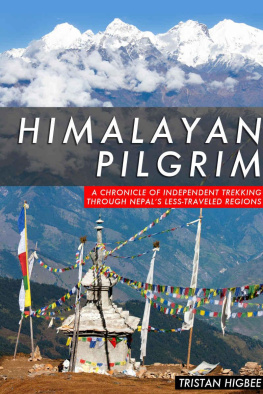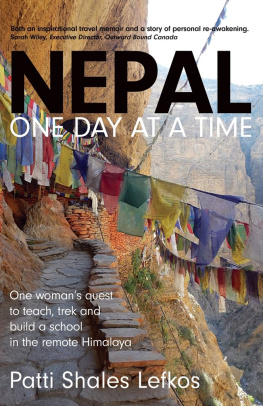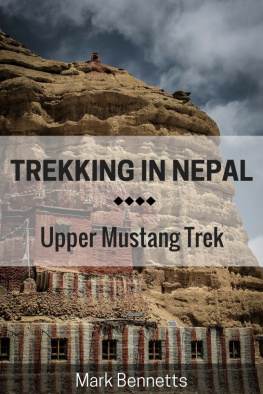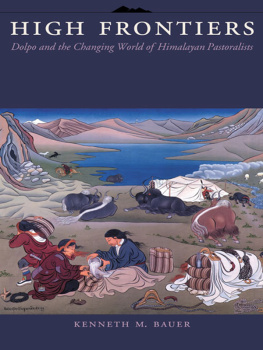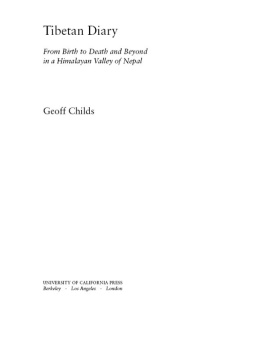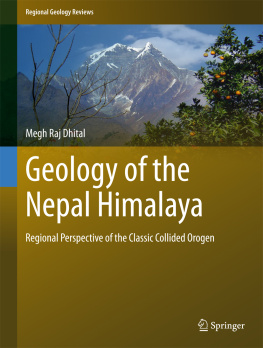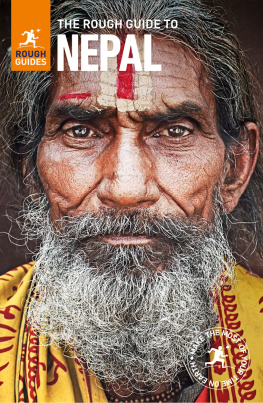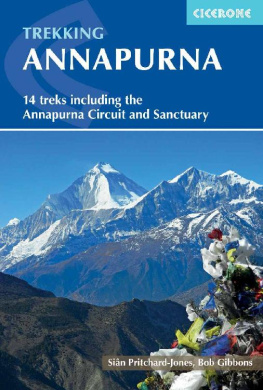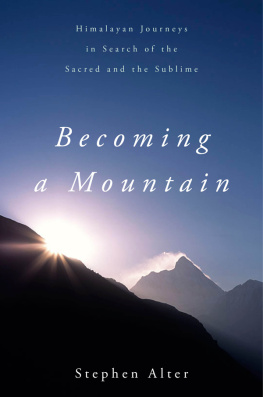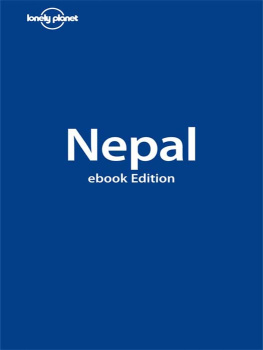To seea map of these treks and many more photos from each day of each trek, visit theauthors website at http://thealoof.com/himalayan.
Day 0: Kathmandu to Syabrubesi
Sunday, November16
I silently handed Sanjay the water bottle and pack oftissues I was clutching and preceded to vomit liberally out the window of themoving bus.
It was then that I questioned the wisdom of trekking againin Nepal. It was my second visit to the country. I had spent two weeks theprevious year trekking to Everest Base Camp and elsewhere in the Everest region.It was an amazing experience, one that cemented Nepal in my mind as my favoritecountry in the world. But the trek was difficult. Id developed a hackingcough, an endlessly runny nose, horrific sunburn, and a level of fatiguepreviously unmatched in my life. It was also very, very cold.
I returned to Nepal this time telling myself that I wasthere to write and work, not to trek. Id explore the lowlands, the parts ofNepal that I had neglected on my first visit. I would admire the mountains fromafar but keep a respectful distance. Then I met Sally, an English doctor volunteeringin a Kathmandu hospital. She invited me to trek with her and a couple of herfellow volunteer doctors through the Langtang region of the Himalaya. I knewnothing about Langtang or the treks there, but Sally told me that it was the partof the Himalaya directly north of Kathmandu that abutted the Tibetan border. Itold her Id think about it for a few days and get back to her, but I knewalmost right away that I would go. As a friend has since told me, I think thatif you love the mountains and you love Nepal, you should always assume you willtrek when you visit. Indeed. Looking back, it was inevitable.
A week later, I was on a bus heading for Syabrubesi, thestarting point of our trek. I had a window seat in the middle of the bus, andSanjay, a friend of Sallys from Australia, sat next to me. Sally and Jo (Sallysfriend from back in England and the final member of our trekking party) weresitting together at the very back of the bus.
I had read about the bus ride from Kathmandu to Syabrubesi. Phraseslike death road and road from hell were used copiously. I dismissed theseas gross exaggerations and the hyperbole of people far weaker than myself. Idbeen on dozens of bus journeys throughout Asia, after all. How much worse couldthis ride be? But as I sat there vomiting out the window of the bus, I had toconcede that maybe this particular journey deserved the hype.
I was sick, and it wasnt just from the motion of the bus.Id started to develop a bad cold the day before, just in time for it toaccompany me for the duration of the trek. I took some powerful cold medicineon an empty stomach earlier that morning, and that combined with theoh-so-winding roads was enough to make my hands tingle and my temples throb. Idfelt a wave of nausea come on earlier in the ride and been able to keep it incheck, but the second wave was too much for me. As the bus slowly roundedhairpin turn after hairpin turn, I slid open the window next to me, stuck my headthroughbeing careful to hold the window open with my hand so that Iwouldnt get decapitated if the bus had to make a sudden stopand did thedeed.
I wasnt the only casualty of the road; Sally wasnt faringmuch better. She searched the bus for another, more comfortable seat up towardthe front, but all of the other seats apart from one had people sitting inthem. A German man had piled a few backpacks onto the seat next to him.
Would you mind if I sat there? Sally said to the man,pointing to the seat with the packs on it. Sitting in the back of the bus ismaking me feel ill.
Sorry, said the man, a pained expression distorting hisface. But I paid for this seat specifically for the bags. But really, iftheres anything that I can do to help, do let me know.
Could we just switch the bags over to my seat? Sallyresponded, pointing over to her seat a few rows back.
Im sorry, the man said again. It is impossible. But iftheres anything I can do to help you feel better, please let me know. Absolutelyanything. The depth of the mans feigned willingness to help was almosttouching.
She got so queasy that Sanjay had to give her a full dose ofsome powerful, severe-sounding medicine that put her into a state of drowsy buthappy semi-drunkenness. Whenever the bus lurched to a stop and we had to getout to show our trekking permitswhich we did at what seemed like a dozencheckpoints along the wayshe would look around with an extremely contentedlook and a dazed smile on her face. She kept cozying up to Sanjay (a happilymarried man), taking his arm, and saying how cuddly he was. She also madefriends with an English trekker whom she directly referred to dreamily asPrince William.
At one point in the journey, Sally tried to lie down in theaisle of the bus to get some rest, but the horrified bus attendant ushered her upto share a seat with a similarly sick Nepali woman at the front of the bus. Sallyand the Nepali woman spent the rest of the ride with their arms around eachother, partly to keep each other on the seat and partly as a show of support.The Nepali woman ended up vomiting five times, each time into a plastic bagthat was subsequently tossed out the window.
What is wrong with your group? the Czech trekkers in therow behind Sanjay and me asked in amazement, referring to our apparentpropensity to physical breakdown. It was true that this was perhaps not themost auspicious of starts to a week or two of adventure in remote places, butwe were still in surprisingly high spirits.
The distance between Syabrubesi and Kathmandu is just 32miles (51 kilometers) as the crow flies, but that lengthens to about 80 miles(129 kilometers) by winding road. We were riding the Super Express Tourist Bus,a misnomer if there ever was one. This bus cost a couple of dollars more thanthe local bus and was more direct than the local bus, which stopped at everylittle town and village along the way. The local bus reportedly took nine hoursto cover those 80 miles between Kathmandu and Syabrubesi (thats just under 9miles or 14 kilometers per hour), while ours was reported to take about sevenhours (a blisteringly fast average of 11.5 miles or 18.5 kilometers per hour).
Once we left Kathmandu, the road snaked its way through thecontours of green hills completely covered in terraced farms. The landscapereminded me very much of Southeast Asia, including the time I nearly threw up ona minibus ride through the mountains of Laos.
The bus stopped briefly for lunch at a littlehole-in-the-wall restaurant in one of the larger towns we passed through. Itserved the usual Nepali fare, namely dal (lentil soup), momos (steameddumplings with vegetables, meat, or potatoes inside), and rice. Though I wasfeeling considerably better at this point in the journey, I thought it best notto risk taking in any foodstuffs of dubious provenance. Sanjay ordered somebeautiful momos, and Prince William bought and shared a bag of importedAmerican Style Sour Cream and Onion Lays potato chips that everyone agreedwere superb. Our lunch break over, we again boarded the bus to continue thejourney.
Our bus attendant was a curious fellow. He took greatpleasure in opening the side door of the moving bus and kicking out at any lucklesschickens obstinate enough to not give the bus a wide enough berth. He wouldalso open the door, climb up the rickety ladder bolted to the side of the bus,and sit on top for a while. He did this while the bus was still moving, thevehicles momentum shifting unpredictably from side to side as it swerved toavoid animals, people, potholes, and boulders. I guess if I had to deal withpeople vomiting all day every day, Id want to get away from it all too. Ormaybe he anticipated the more treacherous points in the road ahead and figuredthat his chances of survival were better out in the open.

